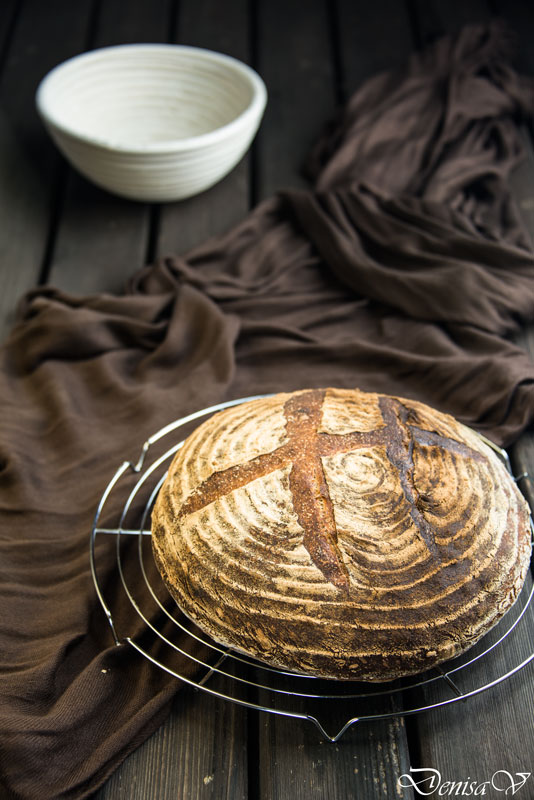
I was reading the post of a blog that I adore and my eyes stopped to a special recipe. It was a love at first sight. Whole wheat grains, flax seeds and sourdough were the main ingredients. It was clear to me in that moment what would have been the next recipe to try.
But because a success doesn't come just like that, here are some exciting experiences with this bread.
Like most of sourdough breads, this one asks for a preferment. Clear enough, but the resulting preferment it was a hard ball, ready to give it to my child to play with. I was used with a more liquid preferment or at least with a preferment with a dough consistency, so after seeing mine, I grabbed the tablet to check on the web if I had done something wrong. Not at all. The recipe was exactly like this, the pictures where showing exactly the same and comments were saying the same. So I've got a preferment that looked like a hard ball!
In the same time with the preferment, the recipe was asking to soak the flax seeds. Very well, I have put hot water over the seeds and then I have started looking strangely at the floating seeds in the bowl, asking myself if it is true that till morning the water would be completely absorbed. So, I have prepared the strange preferment and put the seeds in water and I went to sleep, a bit nervous, thinking that maybe in the morning I'll have to throw away both of them. And in the morning, surprise surprise ! My preferment was flat looking beautiful, with a spongy consistency as it was mentioned in the recipe. The seeds had been soaked well and they had even started to stick a bit one to another..Perfect, with all the stress gone, I have started to make my bread.
The result of mixing ingredients was a doted dough (because of the flax seeds of course) easy to work with, with a fresh smell and it was a real beauty as you would have liked to eat it unbaked.
For me, it was the first time when the dough was preserving its shape so well in bannetons and later, in the oven, it raised nicely without getting flat. In the same time, my heart was growing full as well of joy.
For those who are trying to use sourdough for the first time, I would recommend this recipe as it gives you a lot of satisfaction.
This bread I shared with some friends visiting me and it was well appreciated. As Codruta Popa, the author of the recipe mentioned, this is indeed a bread for friends.
















